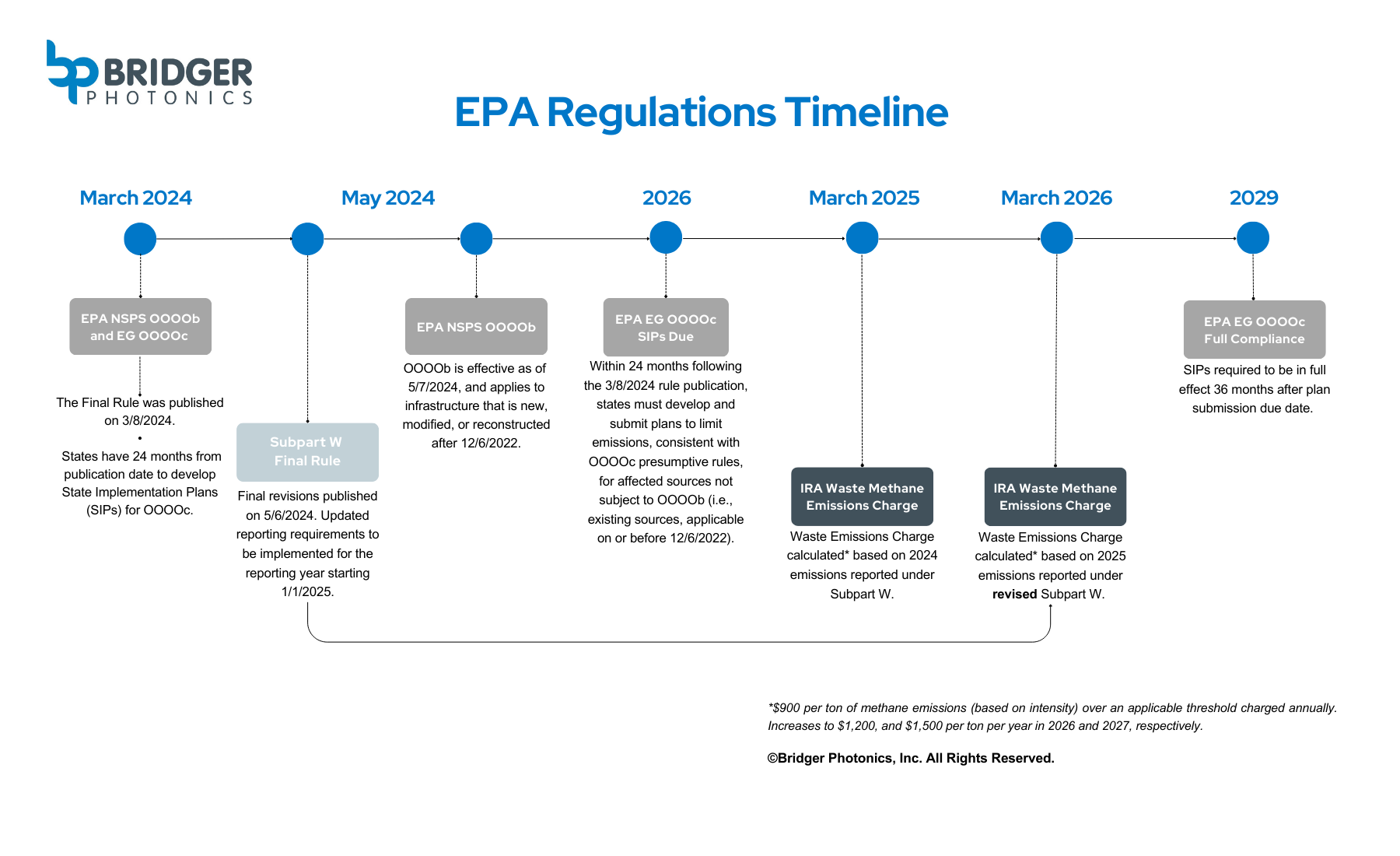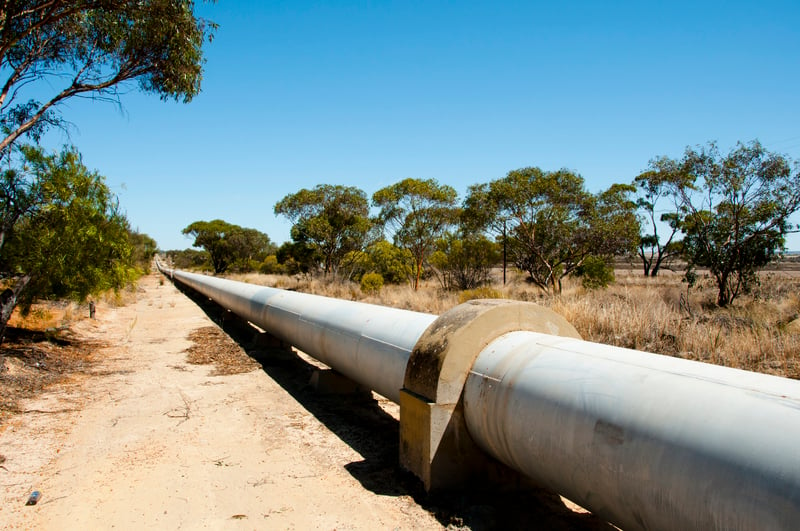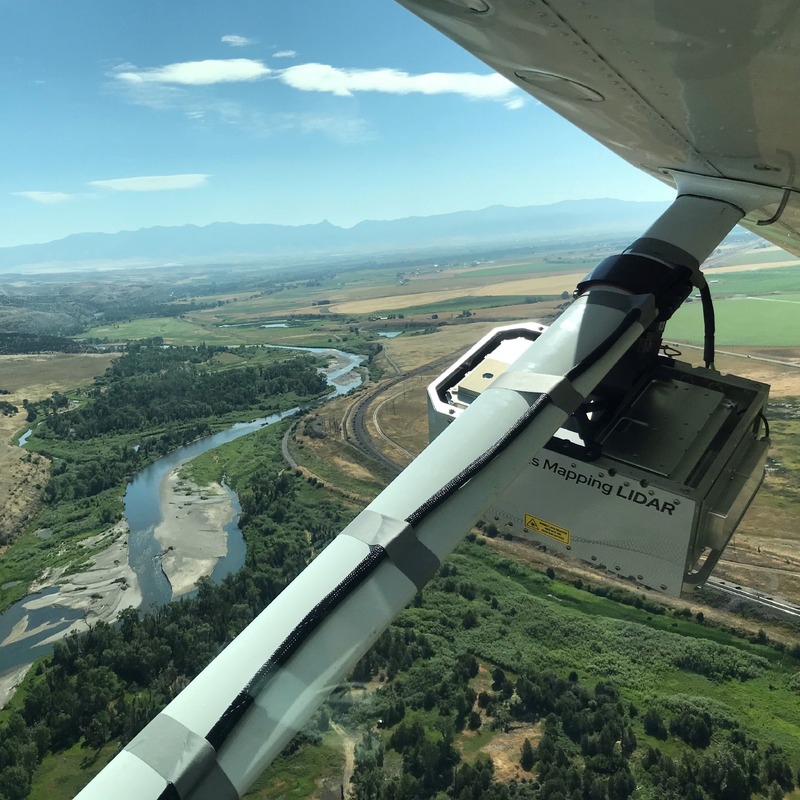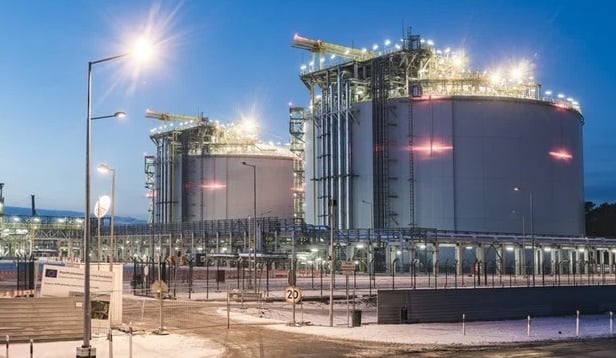Learn
Methane Regulations Overview: U.S. and Canada
Bridger Photonics tracks methane regulations to ensure we can help oil and gas operators reduce emissions and meet regulatory requirements.

Bridger Photonics and Methane Emission Regulations
Energy industry regulations can be complex, they change rapidly, and they vary by location. At Bridger Photonics, we track changes in methane regulations and how they apply to advanced detection technologies used by oil and gas operators. Read below to learn more and find links to the pertinent resources.
Currently, Gas Mapping LiDAR™ (GML) is deployed widely across the U.S and Canada. Federal, state, or provincial regulations, as well as other local regulations, may all be applicable to your sites.* The following resources cover regulations that GML is currently used to comply with, in addition to upcoming regulations that we anticipate GML will be used for.
US Regulations
U.S. Environmental Protection Agency
The U.S. Environmental Protection Agency (EPA) oversees a range of environmental regulations including emissions performance standards for certain oil and gas infrastructure as well as greenhouse gas reporting requirements. Key EPA methane regulations for oil and gas include the mandatory greenhouse gas reporting program (GHGRP, 40 CFR Part 98 Subpart W), and performance standards in 40 CFR Part 60.
On March 8, 2024, the EPA published a final rule that establishes new performance standards to reduce methane and volatile organic compound (VOC) emissions from the oil and gas sector.
You can read the full text here. There are two subsections for this rule:
- Emissions performance standards for new, modified, or reconstructed equipment (40 CFR Part 60 Subpart NSPS OOOOb), known as "OOOOb."
- Emissions regulation guidelines for existing infrastructure (40 CFR Part 60 Subpart EG OOOOc; meant to be addressed primarily by state implementation plans), known as "OOOOc."

EPA Subpart W
On May 6, 2024, the EPA published final revisions to Subpart W of the Greenhouse Gas Reporting Program (40 CFR 98). With expanded reporting and implications for the Waste Emissions Charge, this rule carries significant weight for the industry. Bridger’s team will dive in and dissect the rule to help operators understand its impact and methodically reduce the emissions reported under the rule.

Pipeline and Hazardous Materials Safety Administration
The Pipeline and Hazardous Materials Safety Administration (PHMSA) is a division of the U.S. Department of Transportation (DOT) that regulates oil and gas pipelines in the United States to ensure the safe transportation of energy resources. PHMSA has established emission regulations for leak detection in natural gas pipelines to minimize gas releases and ensure the safe operation of pipelines. These methane regulations require operators to conduct leak surveys and repair leaks promptly.
In May 2023, PHMSA released a proposed rule to “significantly improve the detection and repair of leaks from gas pipelines.” Utilization of advanced leak detection technologies is a required component of this new rule. To learn more, you can read:

U.S. Securities and Exchange Commission
The U.S. Securities and Exchange Commission (SEC) oversees the securities industry and financial markets. The agency proposed a rule in 2022 aiming to enhance and standardize climate-related disclosures for investors. The proposed rule would require public companies to disclose their climate-related risks and opportunities, including their methane emissions, as well as other factors. The proposed rule seeks to provide investors with more complete information to make informed investment decisions and facilitate the transition to a low-carbon economy.

Canadian Regulations
Environment and Climate Change Canada
Environment and Climate Change Canada (ECCC) is the Canadian federal regulatory agency that oversees rules related to the environment and natural resources. ECCC recently proposed a regulatory framework for reducing oil and gas methane emissions to achieve the nation’s 2030 emissions reduction target of 75% reduction relative to 2012, including stringent numerical emission performance requirements for most methane emission sources. For many federal regulations, there are equivalency agreements in place with provincial energy regulators.

Alberta Energy Regulator’s Alt-FEMP Program
The Alberta Energy Regulator (AER) is the regulatory agency for the Canadian province of Alberta that oversees the development and management of energy activities in the province. Its directives currently require operators to scan for fugitive methane emissions three times per year using optical gas imaging (OGI) or organic vapor analyzers (OVAs). However, the AER also oversees an Alternative Fugitive Emission Management Program (Alt-FEMP) that allows operators to use advanced methane-detecting technology instead of the default OGI or AVO approaches. Read more:

Use Gas Mapping LiDAR for Methane Regulation Compliance
Learn more about how Gas Mapping LiDAR can help your company meet state, provincial, or federal methane emission regulation.